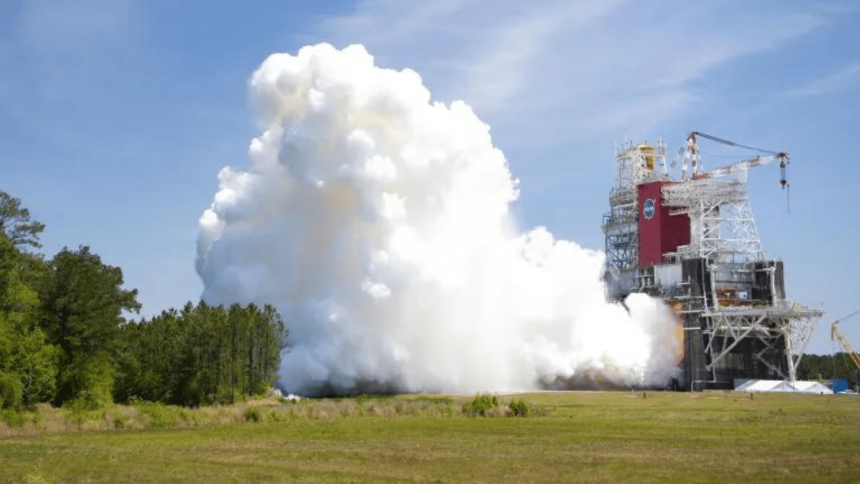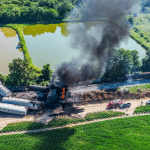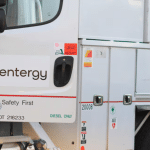NASA’s Stennis Space Center has passed a major milestone after concluding over two decades of testing the world’s most powerful hydrogen-fueled rocket engine with Aerojet Rocketdyne.
NASA Stennis was selected in 1997 as the location to assemble and test RS-68 engines to power the Delta IV rocket, a United Launch Alliance vehicle used for the U.S. Air Force’s Evolved Expendable Launch Vehicle Program.
“The RS-68 program leaves a legacy that has proven invaluable to America’s space efforts,” NASA Stennis Director Rick Gilbrech said. “The work with Aerojet Rocketdyne really laid the groundwork for commercial partnership efforts of today. It has been a privilege to work with the company through these years to support the nation’s critical launch capabilities.”
Along with assembling the engine, Aerojet Rocketdyne modified, maintained, and operated the B-1 Test Stand for testing of the RS-68 throughout a 25-year period as NASA Stennis became the first NASA center to lease its test facilities to a commercial company.
In its original form, the RS-68 engine generated more than 650,000 pounds of sea-level thrust with its first flight launching November 2002.
The evolved engine, RS-68A, capable of producing 705,000 pounds of thrust, was first test-fired at NASA Stennis in September 2008. Following the completion of certification testing, the first flight with RS-68A engines was launched in June 2012.
Additionally, the Delta IV rocket powered by RS-68 engines tested at NASA Stennis flew NASA’s Orion spacecraft for its first mission called Exploration Flight Test-1 in 2014 as NASA’s Space Launch System (SLS) rocket was under development.
The next time Orion flew into space came when SLS, powered by four RS-25 engines also produced by lead engine contractor Aerojet Rocketdyne, lifted off during the successful Artemis I mission in 2022.
Between military and NASA operations, RS-68 engines have a track record of 100 percent mission success. Aerojet Rocketdyne conducted the final RS-68 engine test at NASA Stennis in April 2021.
Since that time, crews used a certification engine to maintain test stand and workforce readiness in the event any RS-68 engines need retesting.
“The relationships formed, and freedom of information shared, are some of the highlights from the program,” Mike McDaniel, Aerojet Rocketdyne general manager at NASA Stennis, said. “Talking about how the test stand functions and what we are doing with the test stand to ensure we are taking care of a NASA asset, that communication – everything from the safety part of it to the quality, to keeping open communication and trust – contributed to the success.”
Over the life of the RS-68 program, Aerojet Rocketdyne conducted 341 hot fire engine tests at NASA Stennis, recorded a total run time of 58,672 seconds, and delivered 77 flight-certified production engines to power Delta IV launch vehicles.
The engines have powered 44 launches, including 15 heavy launch configurations using three core vehicles and three engines.
The final Delta IV mission is scheduled for March 2024 using the last three RS-68 production engines.








